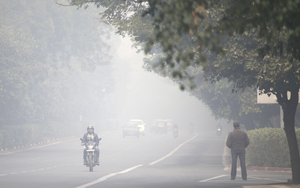New Delhi, January 12 (IANS). A study has found that severe winter ozone (O3) pollution (intermittent ozone pollution) may be caused by alkenes emitted from local petrochemical industries, which may be harmful to human health.
Researchers at Hong Kong Polytechnic University focused on wintertime O3 pollution in Lanzhou, China.
Traditionally associated with hot weather and strong solar radiation, the cold days of January in 2018 recorded hourly intermittent ozone pollution levels in excess of 100 parts per billion, reaching a dangerous level of 121 ppbv (parts per billion) .
In the paper published in the journal Environmental Science and Ecology Technology, the researchers noted that they found that “intermittent ozone pollution in Lanzhou was much higher in winter.”
The researchers said this “contradicts the general consensus that O3 pollution occurs primarily in warm climates and strong solar radiation.”
In this study, scientists used a special type of computer model. This model detects the situation of air pollution (photochemical smog) occurring in cities.
The study revealed that the most important role in the formation of ozone (O3) is played by a process called alkane ozonolysis.
This chemical reaction occurs without sunlight. This results in the formation of certain compounds (Kriege intermediates) that form even more reactive radicals (hydroxide, hydroperoxyl, and organic peroxy radicals). Due to these particles, ozone (O3) is formed very rapidly. Overall, about 90% of ozone formation during these episodes came from compounds called alkenes.
Authors Jin Yang and Yangzhong Jeren said the study could impact the way we understand O3 pollution. This proves that O3 formation can occur even in cold, low light conditions.
Prolonged exposure to ozone pollution can cause breathing problems, swelling and irritation. It can also worsen cough, chest tightness and asthma symptoms.
–IANS
MKS/AS










